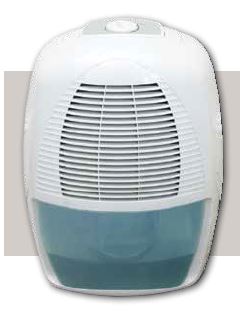Avoid damp conditions

Winter is often the time when you experience damp conditions in your home.
Condensation is caused by warm moist air coming into contact with cold surfaces such as windows and walls. It happens mainly during the colder months, regardless of whether the weather is wet or dry.
Condensation is completely normal and is the most common cause of dampness in the home, especially in colder rooms.
If condensation builds up it can become a major problem.
Why is condensation a problem?
When condensation builds up on a surface it can cause mould to grow. The most common places for this to happen are walls (especially in corners and behind furniture), ceilings, window frames and sills.
Clothes, curtains, bedding, wardrobes and furniture can also be affected.
If left untreated, this can lead to severe dampness and the results could be very harmful to your family’s health.
What can I do to avoid a build up of condensation?
Following these simple steps will reduce moisture in your home which will help to prevent condensation and mould growth:
- Regularly wipe clean surfaces which are prone to condensation
- Move furniture away from the walls so there is a gap to allow air flow
- Increase ventilation by opening windows wide on opposite sides of your home for 15 minutes every morning to allow moisture laden air to be taken away
- Put lids on pots and pans in the kitchen when cooking
- Use the cooker hood or extraction fan if you have one
- Open a window in or near the kitchen and close doors when cooking or sterilising baby bottles
- Don’t use a gas cooker to heat your kitchen as burning gas creates moisture
- Avoid drying clothes inside. If you have to, make sure a window is open in the room where the clothes are drying. Don’t put clothes on a radiator or in front of a fire
- If you use a tumble dryer, make sure it has a vent to the outside or is a condensing dryer
- Close the bathroom door when having a bath or shower, and open the window when possible for at least 30 minutes afterwards
- If you have an extractor fan make sure it is on and don’t switch it off as it has a built-in overrun
- When filling a bath, run the cold water first, then top up with hot water. This simple rule reduces steam by up to 90% - preventing condensation
- Dry bathroom surfaces after a bath or shower
- Leave window trickle vents open if you have them
- Do not cover fans or vents
- Do not store items in the loft – it needs all the space to allow air to circulate
- Do not use bottled gas heaters. These produce the same volume of water as the volume of fuel burned
- Heat your home evenly. Keeping the heating on a low level all day rather than high blasts should help reduce your heating bill
- Do not overfill wardrobes and drawers to allow air to circulate. This includes periodically leaving drawers and wardrobes doors open for a period of time every day
How to reduce condensation and mould growth
Extractor fan
If you have an extractor fan, it’s essential that you use it properly.
After bathing or cooking, switch on the fan – if it doesn’t start automatically. Then close the door behind you. The fan will draw moisture from the room.
Some fans are designed to be constantly running and shouldn’t be disconnected. Their running costs are only a couple of pence a day – and outweigh the cost of any damp and mould problems that might arise.
Dehumidifier
An electrically operated machine that both warms and dries the air.
Warm moist air is drawn into the machine, which passes over a cold coil so that moisture condenses and collects in a container which must be emptied.
Fungicides
There are many fungicide washes and paints available for killing mould fungi on walls, and preventing future growth. Although there is little point in using them unless the underlying cause of the mould growth is removed.
I’ve followed this advice and mould is still growing, what do I do now?
If you have taken reasonable steps to prevent mould from growing in your home by following the above advice and the problem isn’t going away, we can arrange for a surveyor to come and investigate. There may be an underlying problem in your home which is causing true damp, and it is important that we rule out condensation as the cause first.
Please note: It is very important that you ensure these preventative measures are taken to protect damage to your home and belongings for example, carpets, furniture, soft furnishings and clothes.
Failure to implement these self-help measures will be taken into account if you make a future compensation claim for damage resulting from this damp.
What causes true damp?
- Plumbing leaks
- Cracked or blocked drainage pipes or guttering
- Roof leaks
- Damaged walls and overlapped damp proof coursing can all cause true damp
If you are concerned about any of these problems in your home and think that these may be the cause of the damp problems you are experiencing, please contact us.



